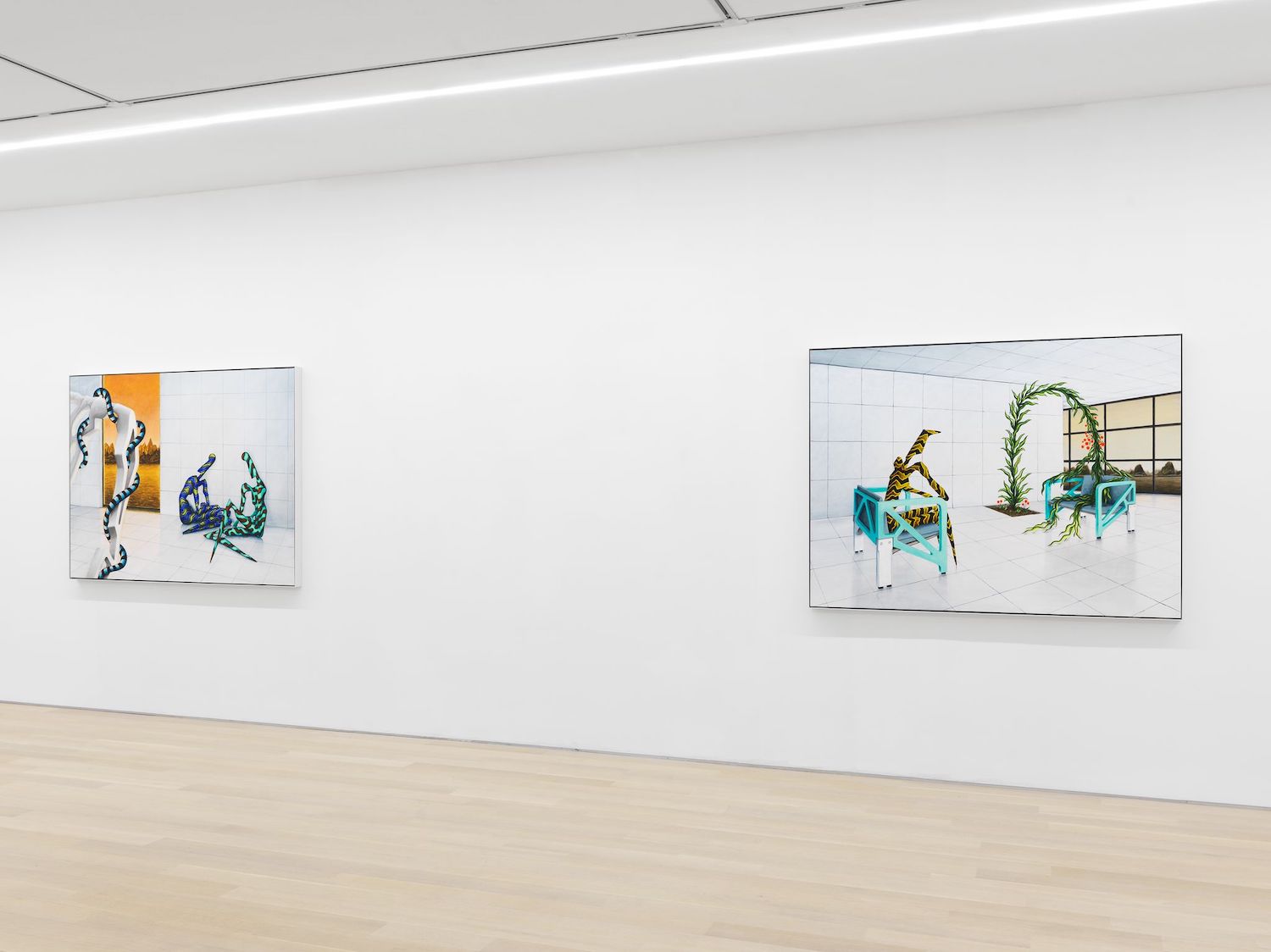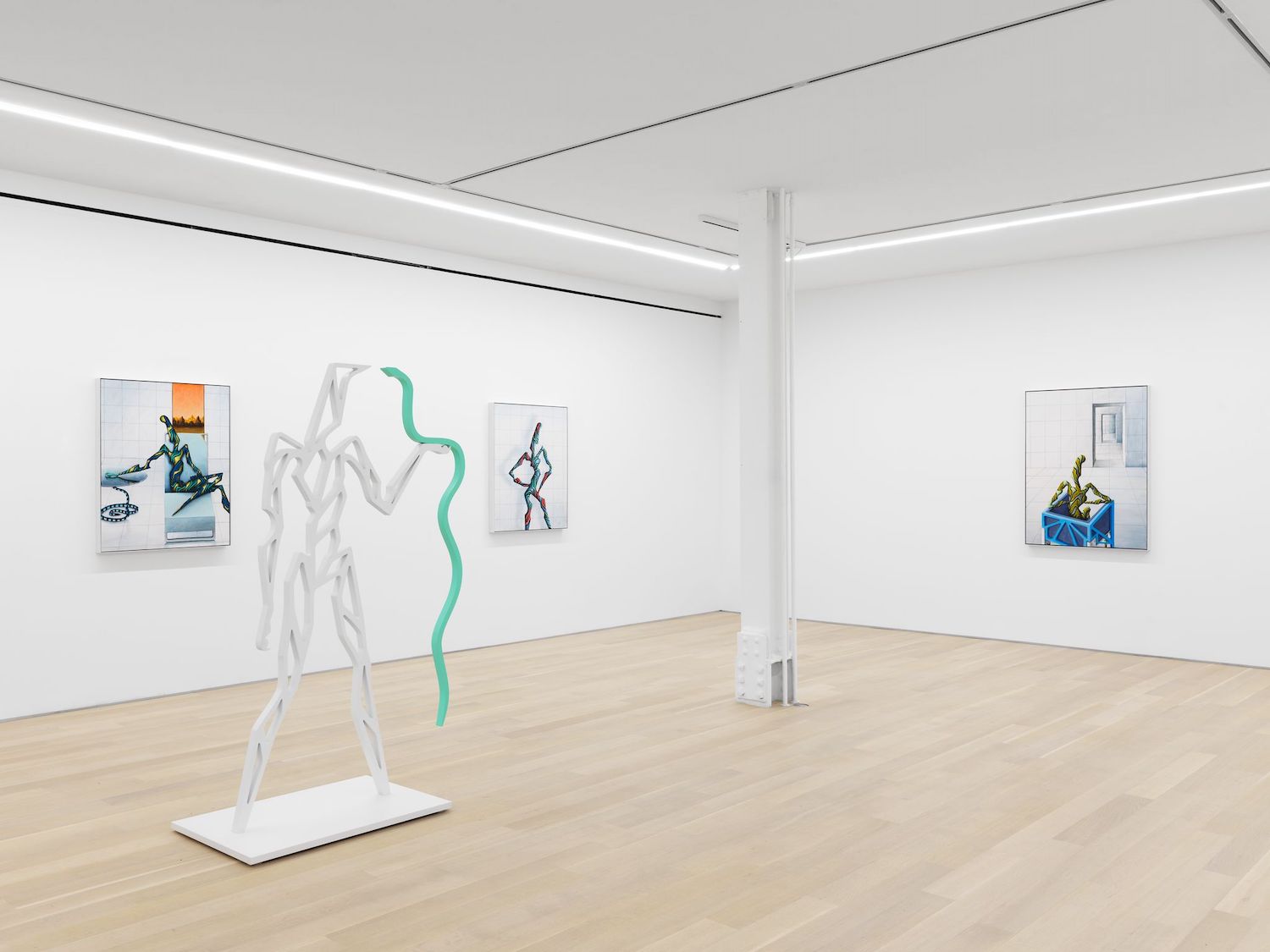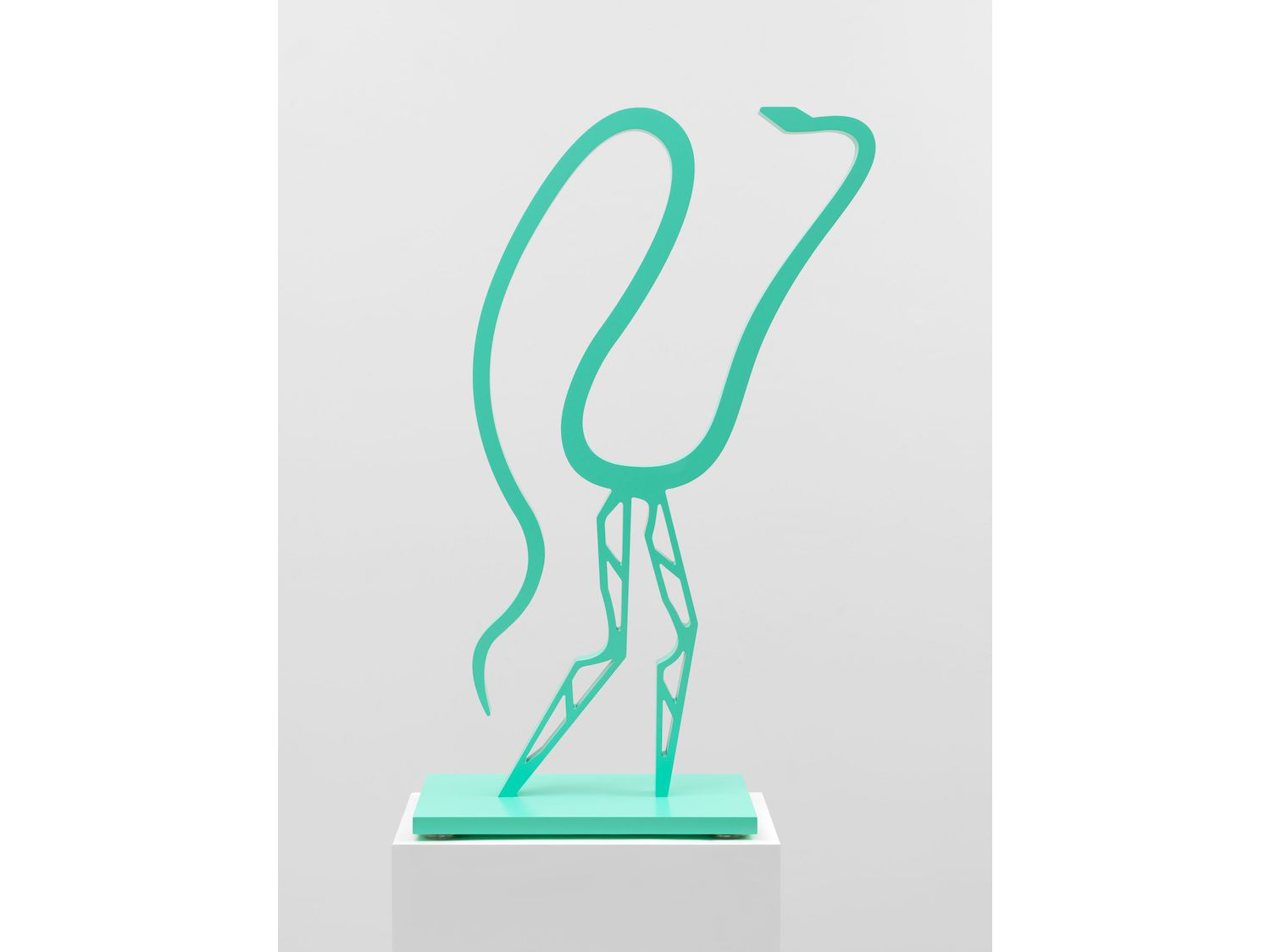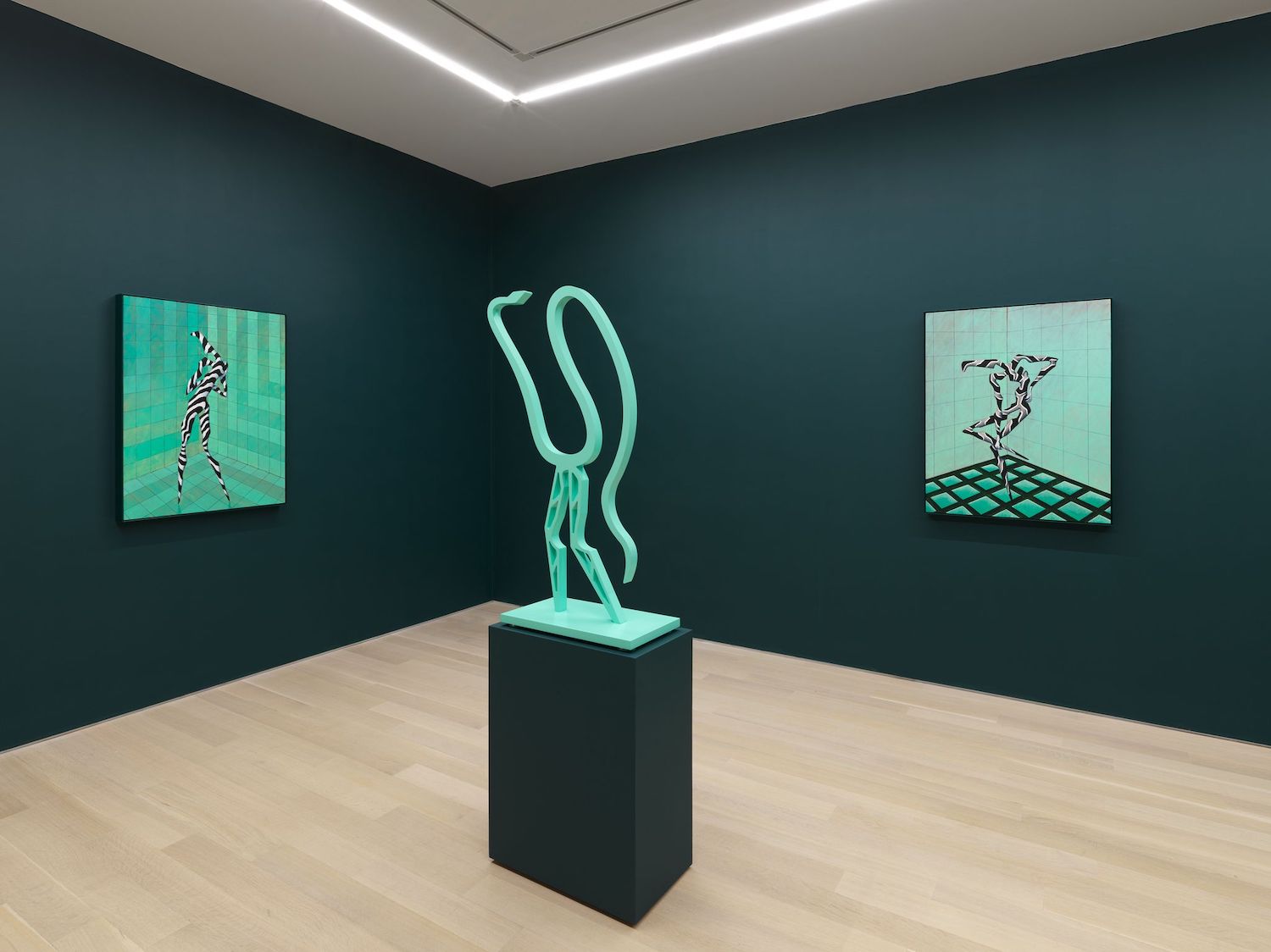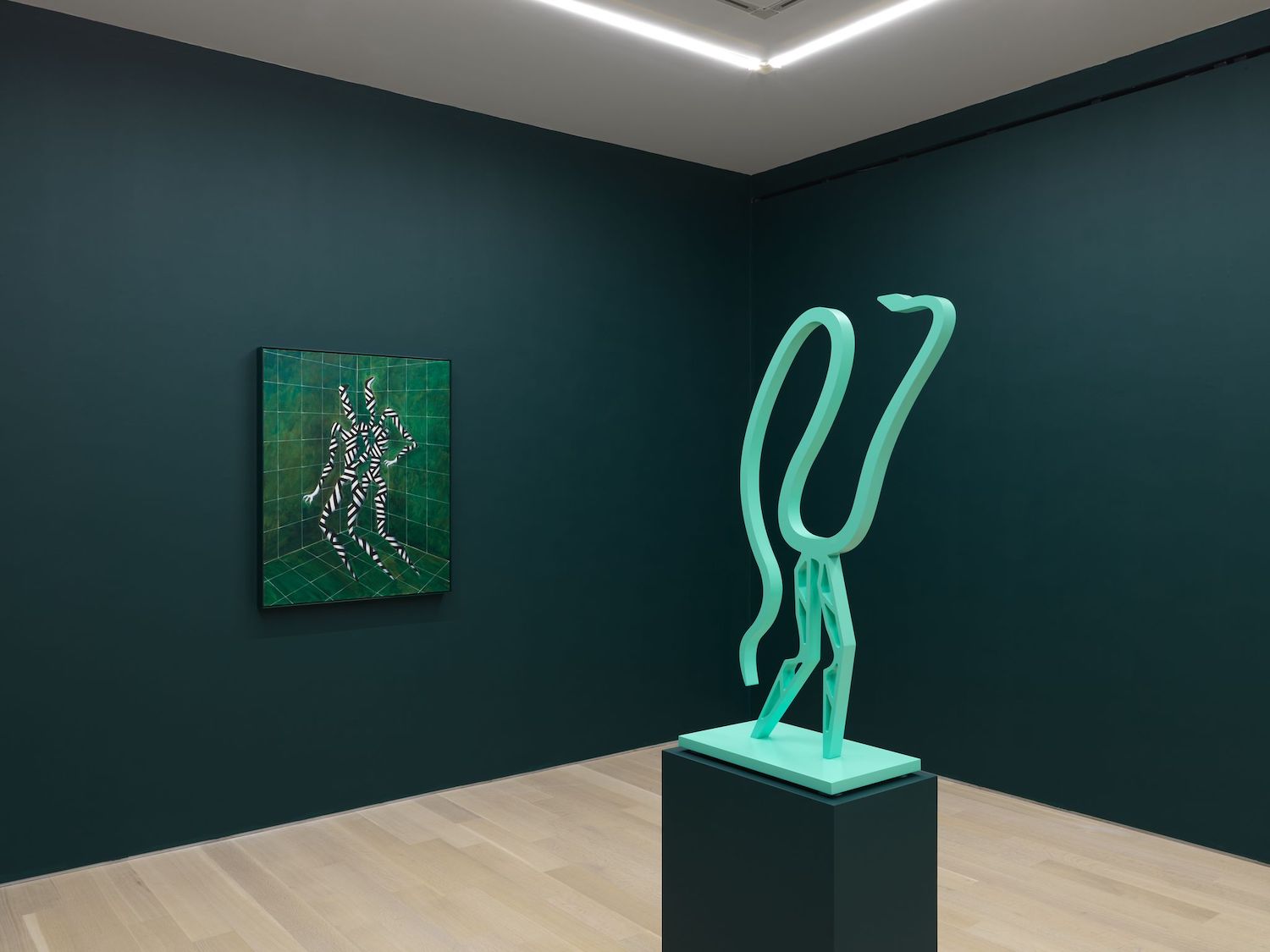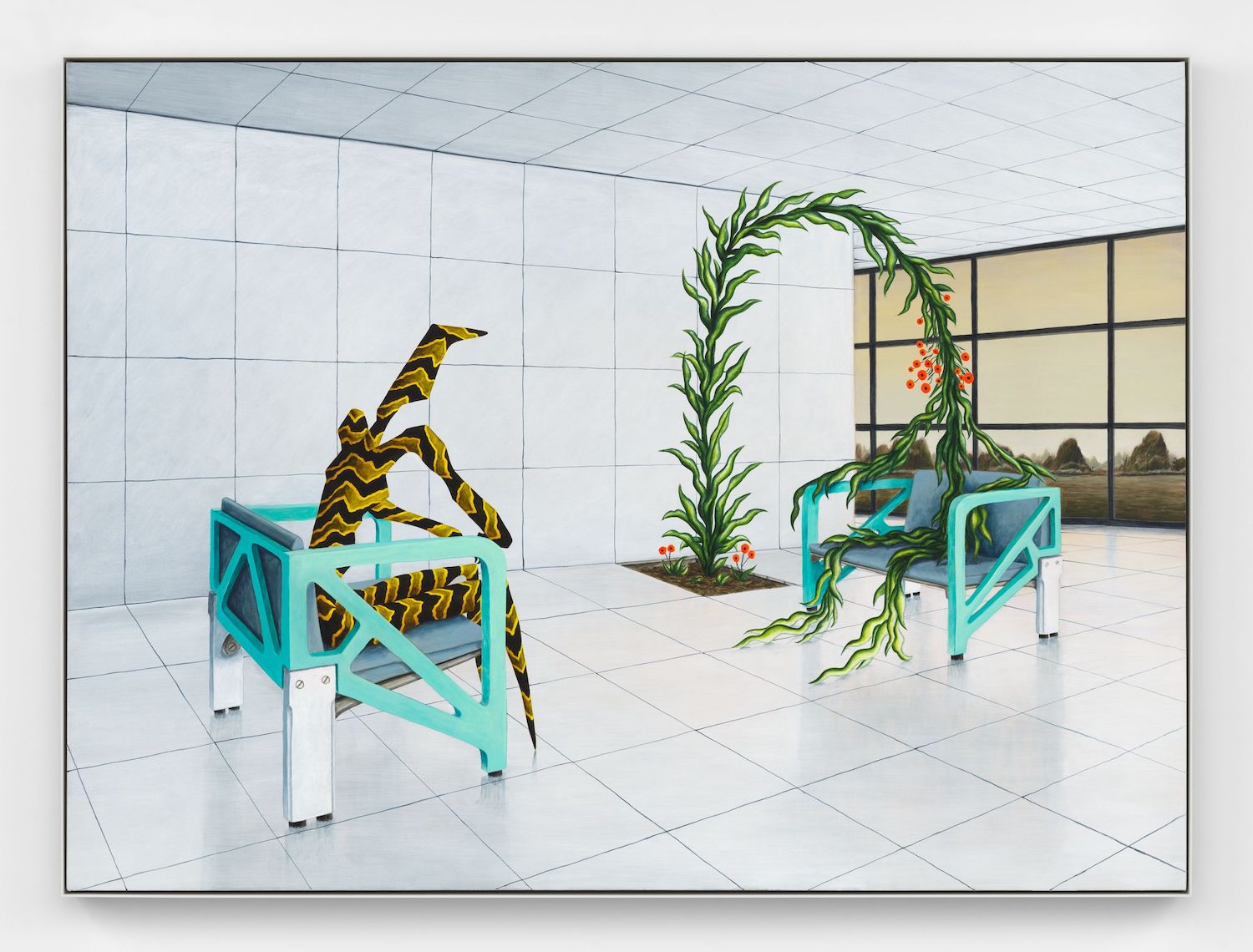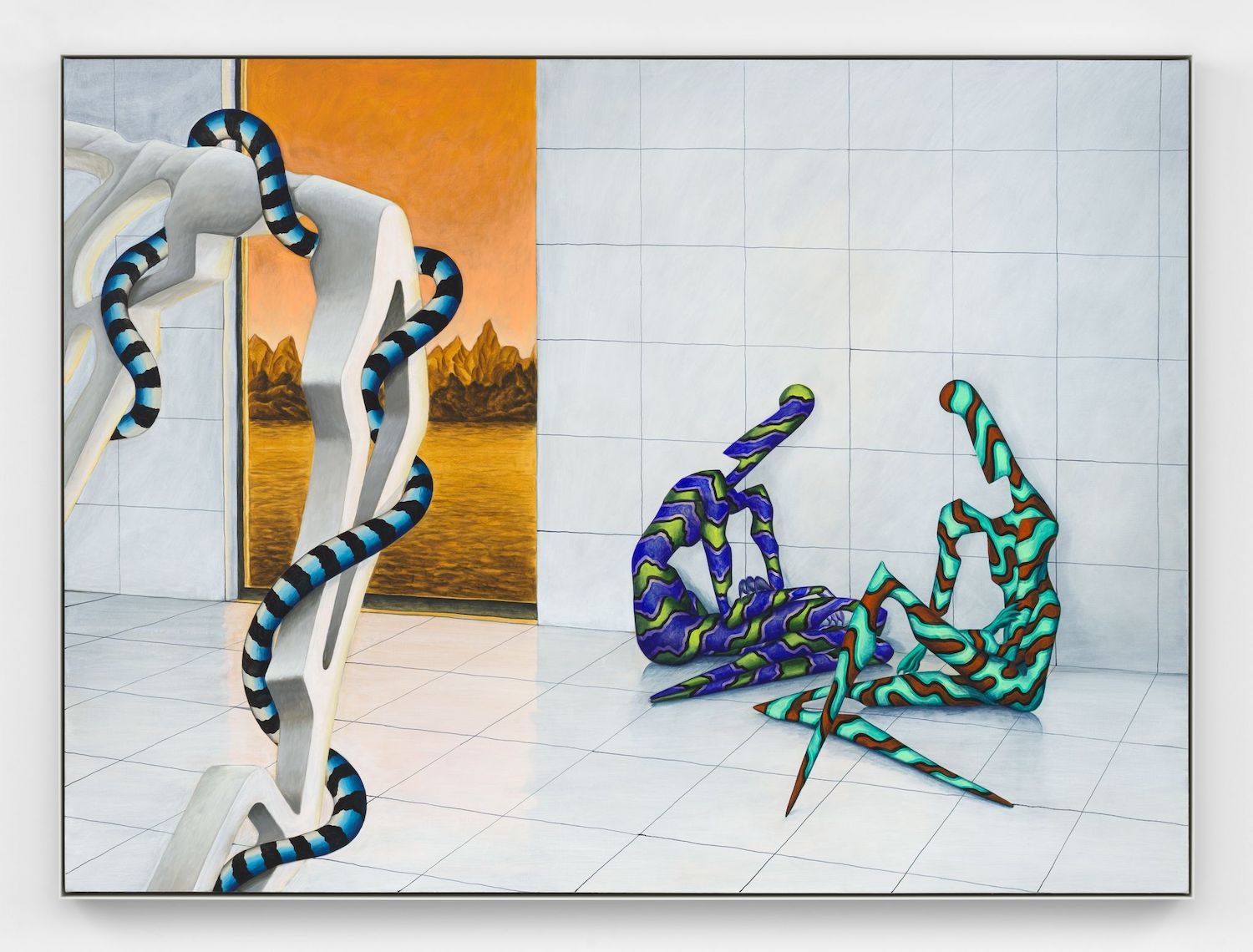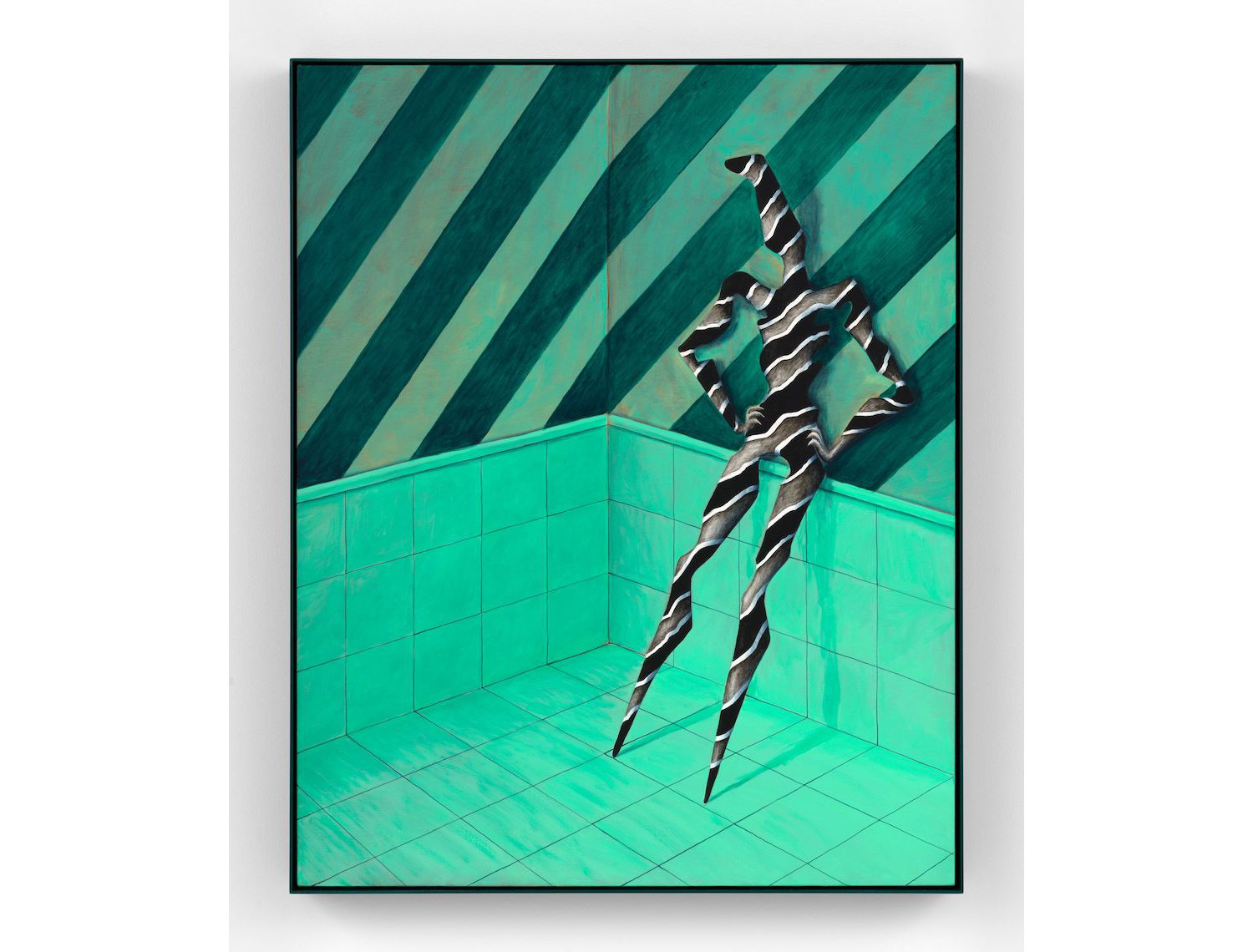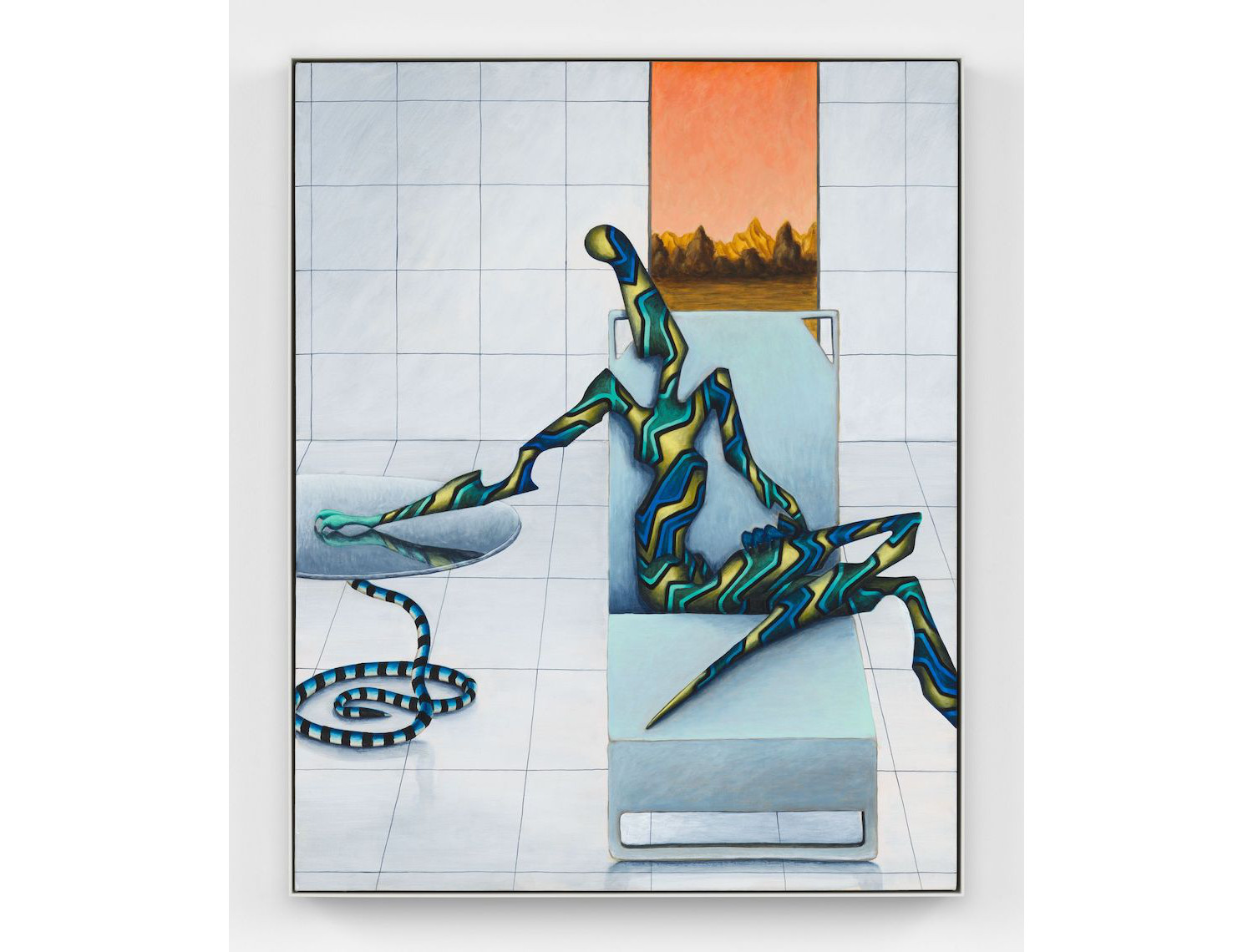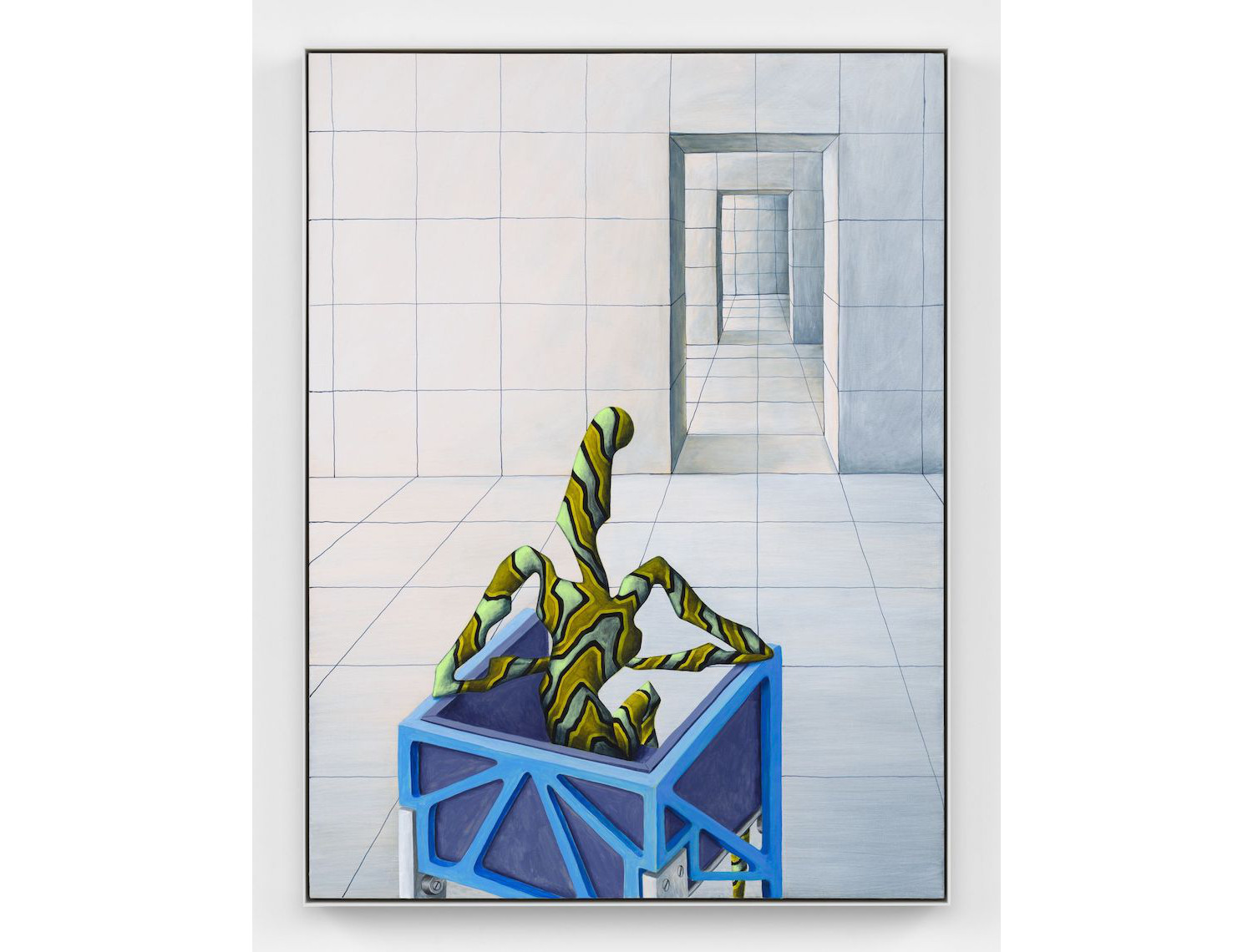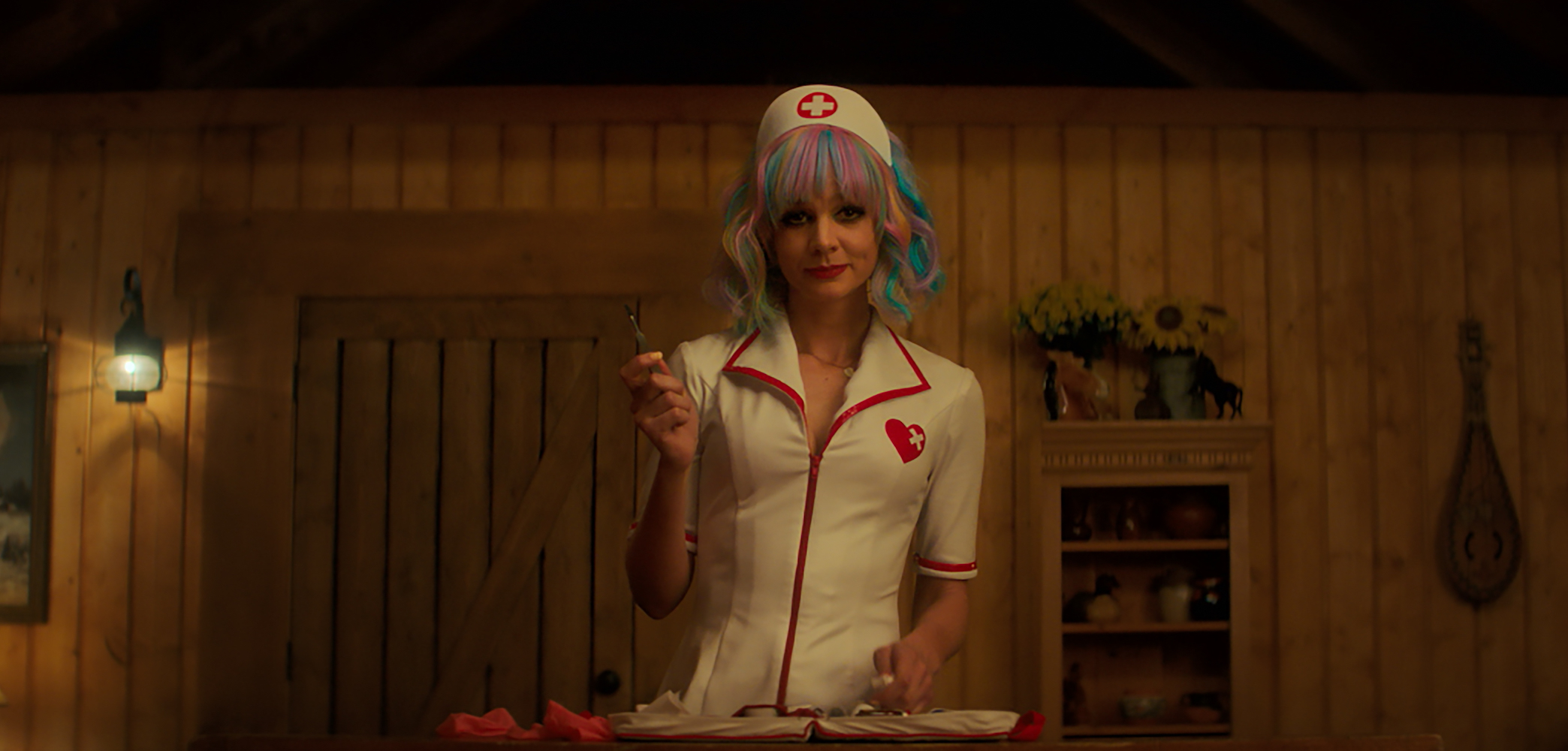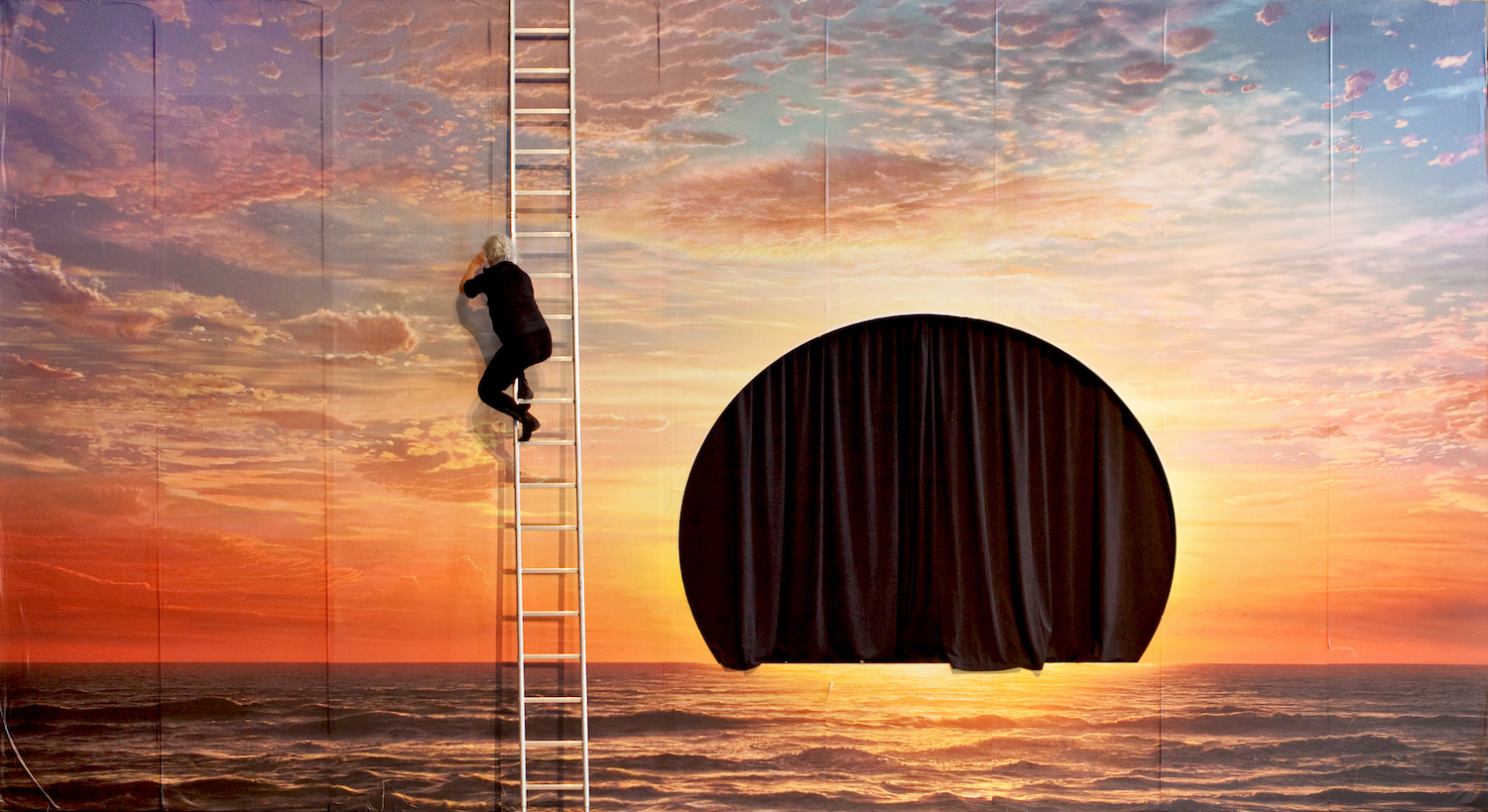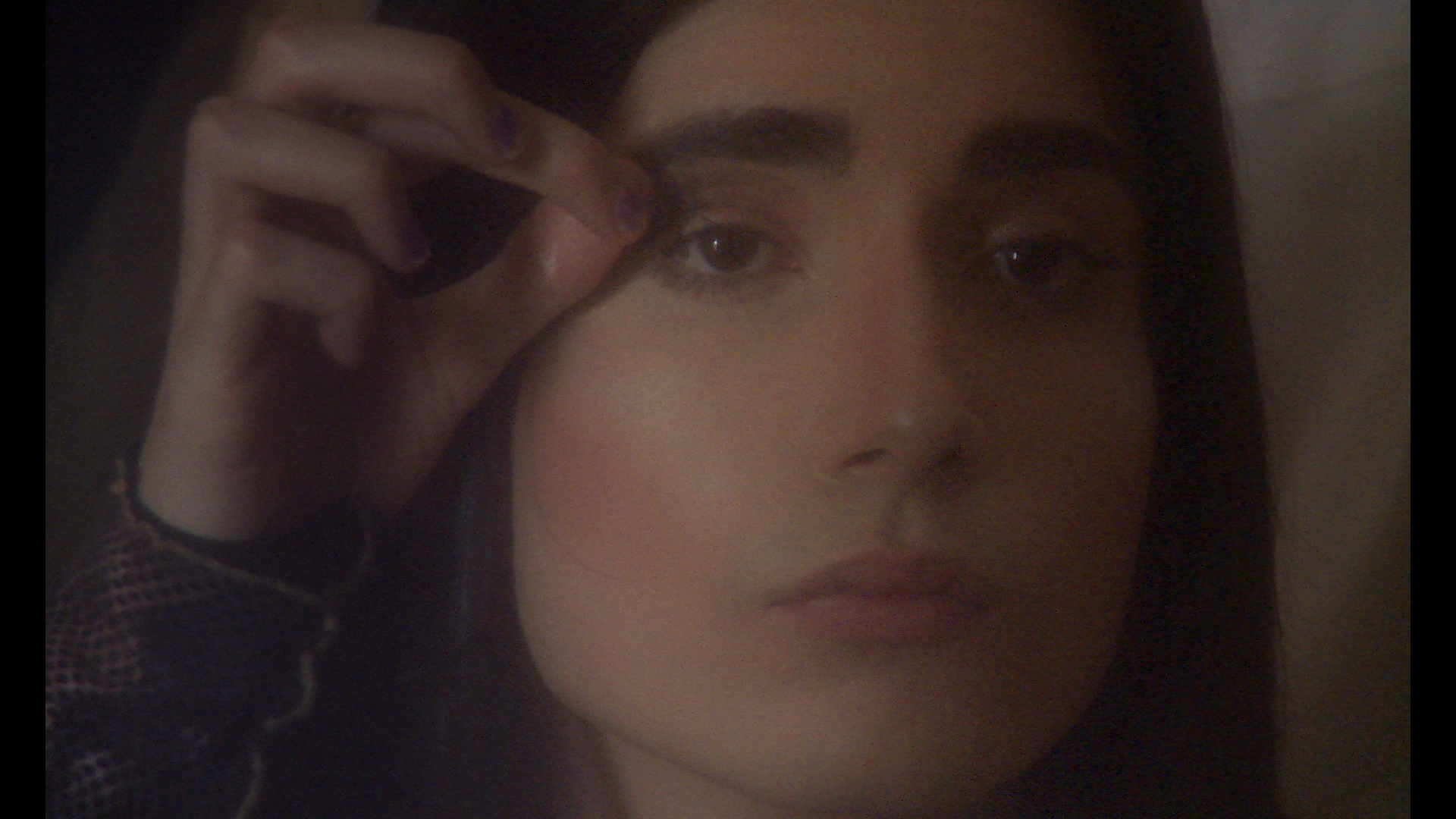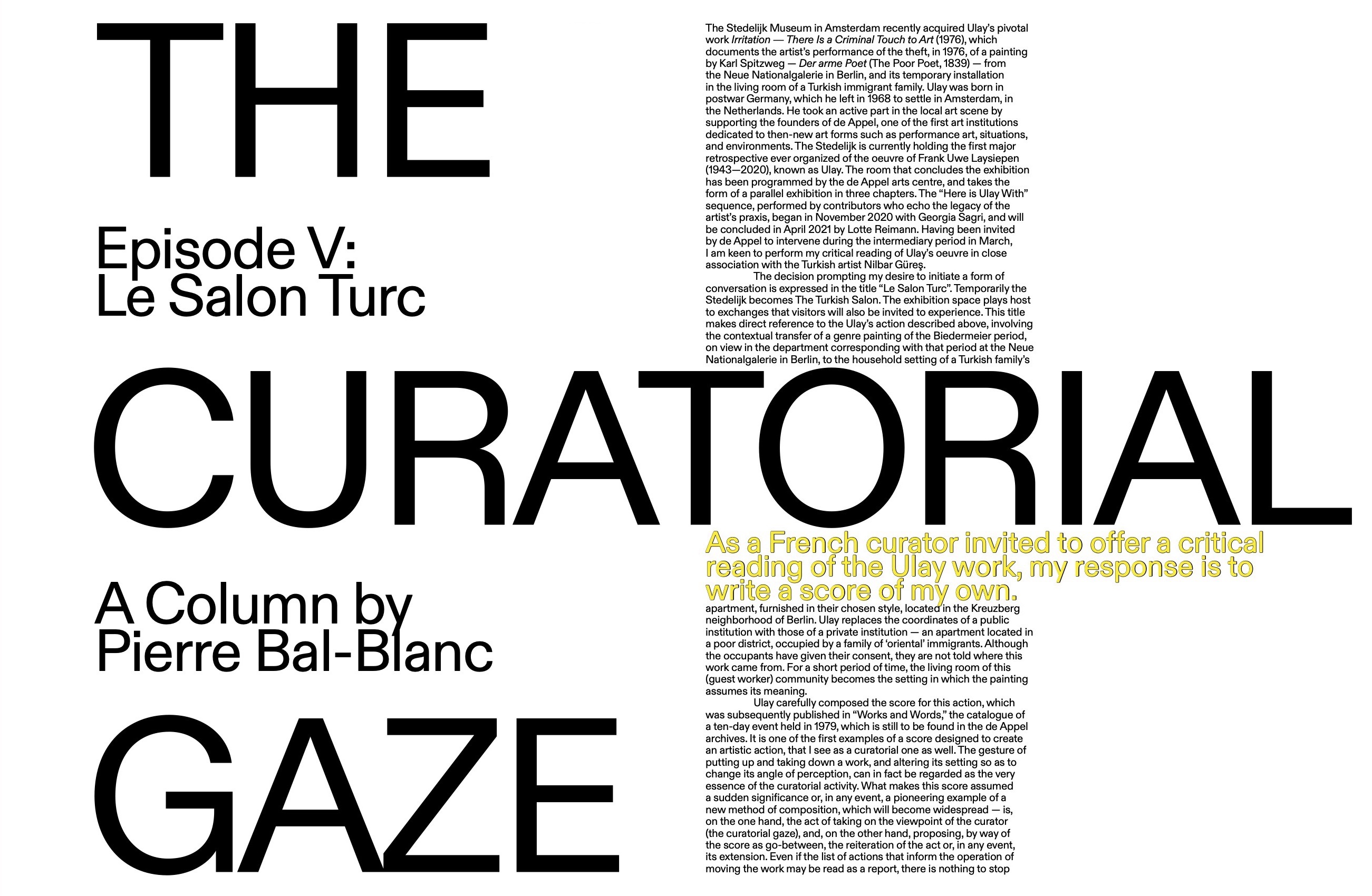These days, it’s not hard to imagine a future in which we can no longer go outside — everywhere we look we can see the effects of the climate crisis, while the COVID-19 lockdowns have forced us to seek new ways of experiencing reality from the confines of our homes. In his new suite of sculptures and paintings for his first exhibition at Almine Rech, Chilean artist Alejandro Cardenas reflects on our current crisis-ridden time. The outcome, however, is anything but glum; it is a series of works that balance a thoughtful reflection on our present moment with a nuanced use of global cultural history.
The show takes its name from a joking reference to the artist himself and to the Egyptian city of Alexandria, famed for being an intellectual hot spot of the ancient Mediterranean, with one of the largest and most important libraries in the Ptolemaic age. The city was also home to a range of diverse histories and cultures, including those of the Greeks, Jews, Arabs, and the Egyptians. Mixing is also a central theme in Cardenas’s eleven paintings and three sculptures. Continuous Sentry and Sea Krait (2021), for example, looks like a three-dimensional hieroglyph, rendered in lacquered aluminum, interfacing the ancient and the modern. The white, human-height sentry figure has the shape of the Egyptian god Horus, with human-like arms, legs, and a bird head. The body forms an outline that is filled-in with crossbars, giving it “stripes” not unlike those of an actual sea krait, while holding a long, pale-green snake up to its beak. Who is threatening whom? Or have they found a balance of power? The sea krait, a venomous striped sea snake, appears in two further, green-colored sculptures — both titled Sea Krait Gerwalk mode (both 2021) — as the top part of a pair of legs.
The sinewy, dangerous creature makes its way into a couple of Cardenas’s paintings as well, including If it’s just surface (2020), in which a black-and-blue-striped snake acts as the legs of a side table. Beside the table, relaxedly lounging on a pale-bluish chair, is one of Cardenas’s signature humanoid figures, propelling the composition into a futurescape. These beings don’t have any eyes, ears, mouths, or sex, and can only be distinguished by the unique colored bands wrapped around their bodies — they look like colorful aliens. And yet the slender creatures, with sharp, angular feet, upwardly pointing shoulders, and lengthy tubular heads with a curling bishop’s staff shape on top, all seem to be at home in their nearly empty surroundings, even those that contain snakes. The abstract yet figurative beings populate bare interiors, with grid-patterned walls and floor, only occasionally furnished, as with the chair in If anything could be learned (2020). Have they learned to live with austerity, setting an example for the viewer? A hint, perhaps, is in a few of the paintings, such as If this were to continue (2020), which has a vertically oriented window showing a mountainous, fiery orange landscape — much like the one the artist witnessed outside his studio window during California’s forest fires.
Blending elements of science fiction, surrealism, abstraction, and figuration, as well as allusions to classical and Egyptian locations and cultures, Cardenas’s works allude to our past and our present. The real strength of this mixture, however, is in its ability to allow us to project into the future, envisioning the challenges to come but also the awesome new horizons we may yet encounter.

